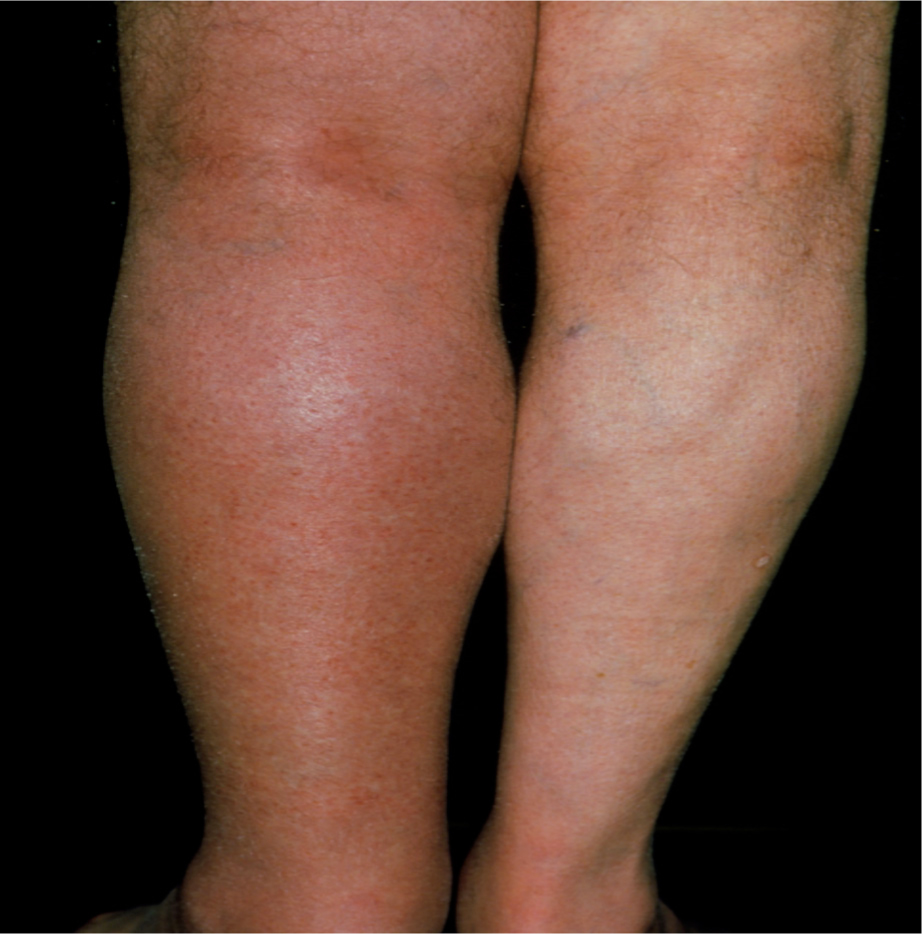Deep vein thrombosis (DVT) is a condition that develops when blood flow through a deep vein is obstructed by a blood clot. DVT occurs after surgery, trauma and lengthy periods of immobilisation, as well as in conjunction with malignancy; it may also occur spontaneously (Othieno et al, 2018). During the acute phase, patients report lower-leg symptoms and, in a minority of cases, clot dislodgement may occur, leading to potentially fatal pulmonary embolism (PE). DVT and PE are collectively known by the term ‘venous thromboembolism’ (VTE). The gold-standard practice for diagnosis of DVT includes ascending venography and duplex ultrasound scanning, and clinical management usually involves the administration of anticoagulants. These agents are used to prevent the spread of the clot proximally and to allow it to become adherent or undergo fibrinolysis, thus decreasing the risk of PE. The anticoagulant treatments used include unfractionated heparin (UFH), low molecular heparin (LMWH), vitamin K antagonists, such as warfarin, and direct oral anticoagulants (National Institute for Health and Care Excellence, 2012; van Es et al, 2014; Robertson et al, 2015).
In-patient management of DVT usually consists of the administration of UFH intravenously, with regular pathology monitoring for approximately 5 days. This treatment is overlapped with oral anticoagulants, which are continued for 3–6 months. Alternatively, LMWH is administered daily by subcutaneous injection. This intervention does not require continuous pathology monitoring and can be administered in the patient's home. It is sometimes followed by an oral anticoagulant regime.
Trials have been undertaken to compare the efficacy and safety of LMWH with those of UFH. These studies have demonstrated that LMWH is at least as effective as UFH, with some reviews and meta-analyses reporting that LMWH is more effective and safer than UFH (Leizorovicz et al, 1994; Lensing et al, 1995; Erkes et al, 2010). Treating patients diagnosed with DVT within their home offers potential cost savings and improved social acceptability. Thus, the available evidence requires further consideration.
Objectives
The main objective of this updated Cochrane systematic review (Othieno et al, 2018) was to compare the incidence and complications of VTE in patients treated at home versus those treated with standard in-patient hospital regimes. Second, Othieno et al (2018) aimed to assess patient satisfaction and the cost-effectiveness of both treatments. The primary outcomes included recurrence of VTE, venous gangrene, heparin complications (minor and major bleeding) and mortality. The secondary outcomes included cost-effectiveness of the treatments, patient satisfaction and quality of life.
Intervention/methods
In their review, Othieno et al (2018) searched for randomised controlled trials (RCTs) that compared home versus hospital management with LMWH (which can be used in either setting) or UFH (which is used in hospital only). Patients included those with a definitive diagnosis of VTE, whose home environment was suitable and who had no contraindications to heparin therapy. For the 2018 update, the reviewers searched five electronic databases and trial registries for relevant trials, up to March 2017. Papers were considered for this review irrespective of language, date and publication status. The selected studies were appraised for risk of bias using the Cochrane Handbook for Systematic Reviews of Interventions (Higgins and Green, 2011). The quality of evidence was assessed using the Grading of Recommendations, Assessment, Development and Evaluations (GRADE) framework.

Results
Seven studies with data available for 1839 randomly assigned participants were included in this updated review. One trial that had previously been excluded as it did not report on any primary outcomes was included in this update, as it reported on economic data. All seven studies had some fundamental problems, which included high exclusion rates, partial hospital treatment of participants in the home treatment arm and comparison of UFH in hospital versus LMWH at home. Six trials showed that patients treated at home with LMWH were less likely to have VTE recurrence compared with patients treated in hospital with UFH or LMWH. There was no reported case of venous gangrene and, for the primary outcomes of heparin complications and mortality, there were no clear differences between the treatment arms.
Three studies included data on quality of life and patient satisfaction. A meta-analysis was not possible on this outcome due to heterogeneity of reporting. Two of these three studies reported on quality of life, and the evidence suggested that home treatment led to a greater improvement in quality of life compared with in-patient treatment during follow-up. In the third study, a large number of participants switched from in-patient to home treatment for social and personal reasons. This may suggest that this was the patients' preferred option, but the evidence was of very low quality and thus requires caution in interpretation. None of the studies included a full cost analysis. However, one small study involving 131 participants conducted an economic evaluation of the two treatment strategies and found that the direct costs were higher for those in the in-patient treatment group.
Conclusions
The key point for nurses is that there is no evidence that at-home treatment with LMWH is more harmful than in-patient management with LMWH or UFH. Further, based on low-quality evidence, the review (Othieno et al, 2018) suggests that patients treated with LMWH within their homes are less likely to have recurrence of VTE than those treated within an in-patient setting.
Implications for practice
Due to the limited evidence related to home versus in-patient treatment for DVT and because healthcare organisations are progressing to greater use of LMWH in the home setting (Wong and Butt, 2014), it is unlikely that further research comparing the two interventions will be conducted. Nurses should support further research to facilitate the development and evaluation of practical clinical guidelines, the use of biomarkers and imaging to individualised treatment plans and the training of community healthcare workers who administer treatment and monitor progress.

